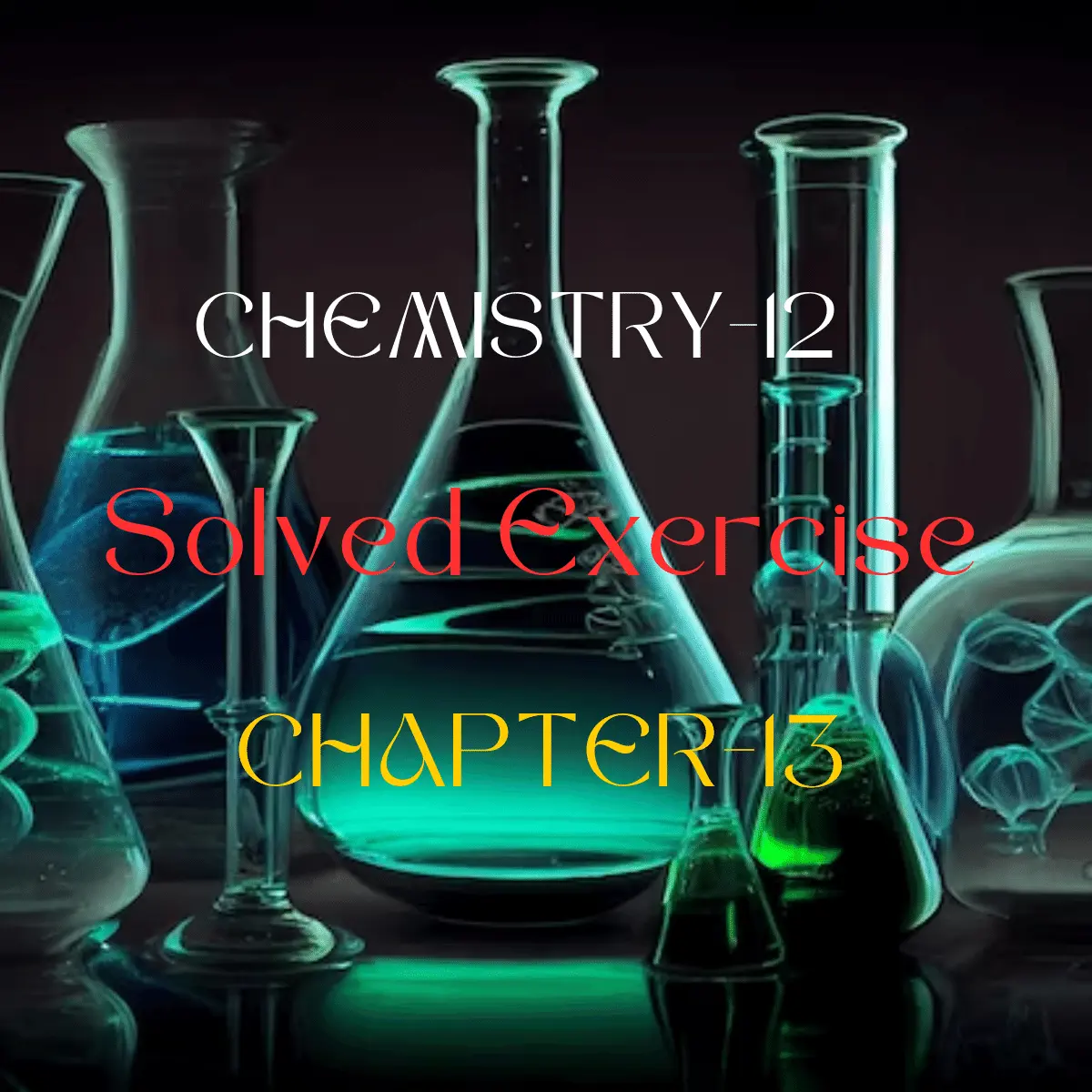CARBOXYLIC ACIDS
FILL IN THE BLANKS
Q.01: Fill in the blanks:
(i) Formula of malonic acid is __________. (HOOC–CH2–COOH)
(ii) Methyl nitrile upon acidic hydrolysis produces ________. (acetic acid)
(iii) Melting points of carboxylic acids containing even number of carbon atoms are _________ than the next lower and higher members containing odd number of carbon atoms. (higher)
(iv) Acetic acid on heating with _______ produces acetic anhydride. (P2O5)
(v) Acid chloride and acid anhydride are called ______ of acid. (derivatives)
(vi) Pure acetic acid is called ________. (glacial acetic acid)
(vii) Formula of alanine is ________. (CH3–CH(NH2)–COOH)
(viii) Proline is a _______ amino acid. (neutral)
(ix) A peptide having a molecular mass more than 10000 is called _______. (protein)
TRUE/FALSE
Q.02: Indicate True or False:
(i) Acetic acid exists as a dimer in benzene. (TRUE)
(ii) First three aliphatic acids have fruity smells. (FALSE)
CORRECT: First three aliphatic acids have pungent smells.
(iii) Carboxylic acids on reduction with LiAlH4 produce alkenes. (FALSE)
CORRECT: Carboxylic acids on reduction with LiAlH4 produce alcohols.
(iv) Acetic acid on dehydration produces CO and H2. (FALSE)
CORRECT: Acetic acid on dehydration produces acetic anhydride.
(v) Sodium formate on heating with soda lime produces NaHCO3 and hydrogen. (FALSE)
CORRECT: Sodium formate on heating with soda lime produces CO2 and hydrogen.
(vi) Amino acids exist as Zwitter ion. (TRUE)
(vii) Histidine is an acidic amino acid. (FALSE)
CORRECT: Histidine is a basic amino acid.
(viii) A peptide having molecular mass upto 10000 is called protein. (FALSE)
CORRECT: A peptide having molecular mass upto 10000 is called polypeptide.
(ix) Phthalic acid is a monocarboxylic acid. (FALSE)
CORRECT: Phthalic acid is a dicarboxylic acid.
(x) Formula of glycine is CH2COOH. (FALSE)
CORRECT: Formula of glycine is NH2–CH2–COOH.
MCQs
Q.03: Multiple choice questions.
(i) Acetic acid is manufactured by:
(a) Distillation
(b) Fermentation
(c) Ozonolysis
(d) Esterification
ANSWER: (b) Fermentation
EXPLANATION: The fermentation of starch or molasses yields ethanol which is then oxidized by acidified dichromate into acetic acid.
(ii) A carboxylic acid contains:
(a) A hydroxyl group
(b) A carboxyl group
(c) A hydroxyl and carboxyl group
(d) A carboxyl and an aldehydic group
ANSWER: (b) A carboxyl group
EXPLANATION: The functional group of carboxylic acids in carboxyl group (-COOH) which is a combination of carbonyl (>C=O) and hydroxyl (-OH) groups.
(iii) Which acid is used in the manufacture of synthetic fiber?
(a) Formic acid
(b) Oxalic acid
(c) Carbonic acid
(d) Acetic acid
ANSWER: (d) Acetic acid
EXPLANATION: Acetic acid is used in the manufacture of acetate fibers such as rayon (polyvinyl acetate) and silk.
(iv) Which of the following derivatives cannot be prepared directly from acetic acid?
(a) Acetamide
(b) Acetyl chloride
(c) Acetic anhydride
(d) Ethyl acetate
ANSWER: (a) Acetamide
EXPLANATION: Acetamide is prepared indirectly from acetic acid. The acetic acid is reacted with ammonia to form ammonium acetate. Ammonium acetate is then heated to get acetamide.
(v) Which reagent is used to reduce a carboxylic group to an alcohol?
(a) H2/Ni
(b) H2/Pt
(c) NaBH4
(d) LiAlH4
ANSWER: (d) LiAlH4
EXPLANATION: Lithium aluminum hydride (LiAlH₄) is a powerful reducing agent commonly used in organic chemistry to reduce various functional groups, including carboxylic acids. In the reduction of acetic acid (CH₃COOH) to alcohol, LiAlH₄ acts as a source of hydride ions (H⁻). The hydride ion (H−) from LiAlH₄ is transferred to the carbonyl carbon of the acetic acid. CH₃COOH + LiAlH₄ ⟶ CH₃CH₂OH + LiAlO₂H₃
(vi) The solution of which acid is used for seasoning of food?
(a) Formic acid
(b) Acetic acid
(c) Benzoic acid
(d) Butanoic acid
ANSWER: (b) Acetic acid
EXPLANATION: Acetic acid in the form of vinegar is used in various food items such as pickles, curries etc.
(vii) Organic compounds X and Y react together to form organic compound Z. What type of compounds can X, Y and Z be?
| X | Y | Z | |
| (a) | Alcohol | Ester | Acid |
| (b) | Acid | Ester | Alcohol |
| (c) | Ester | Alcohol | Acid |
| (d) | Alcohol | Acid | Ester |
ANSWER: (d) Alcohol + Acid ⟶ Ester
EXPLANATION: Alcohols react with carboxylic acid in the presence of mineral acids to form esters. The reaction is known as esterification reaction.
(viii) An aqueous solution of an organic compound reacts with sodium carbonate to produce carbon dioxide gas. Which one of the followings could be the organic compound?
(a) CH2=CH—CH3
(b) CH3—CHO
(c) CH3COOC2H5
(d) CH3—CH2—COOH
ANSWER: (d) CH3—CH2—COOH
EXPLANATION: A carboxylic acid reacts with sodium carbonate to form sodium salt of carboxylic acid, CO2 and H2O. The reaction is: CH3CH2COOH + Na2CO3 ⟶ CH3CH2COONa + H2O + CO2
(ix) Which one of the followings is not a fatty acid?
(a) Propanoic acid
(b) Acetic acid
(c) Phthalic acid
(d) Butanoic acid
ANSWER: (c) Phthalic acid
EXPLANATION: Fatty acids are straight chain monocarboxylic acids. Phthalic acid an aromatic dicarboxylic acid.
(x) Acetamide is prepared by:
(a) Heating ammonium acetate
(b) Heating methyl cyanide
(c) Heating ethyl acetate
(d) The hydrolysis of methyl cyanide
ANSWER: (a) Heating ammonium acetate
EXPLANATION: The acetic acid is reacted with ammonia to form ammonium acetate. Ammonium acetate is then heated to get acetamide. The reaction is: CH3COONH4 + heat ⟶ CH3CONH2 + H2O
NOTE: Give your opinion about our work. If you have some suggestions, please put them here in the comments so that we may move towards betterment & excellence. Thanks!

